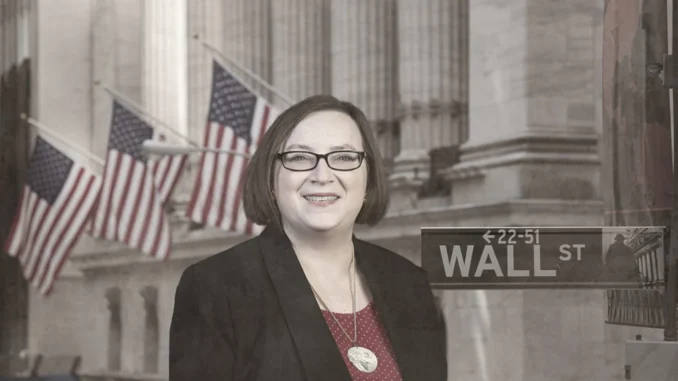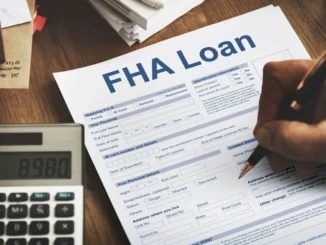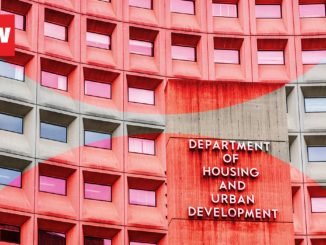
The fate of Federal Housing Administration (FHA)-backed mortgages in the ongoing downcycle housing market is being compared with a canary in the coal mine by several industry experts who track the sector and are seeing early warning signs of distress.
In recent months, the canary has been chirping with far less exuberance as inflation (now above 7% annualized), rising mortgage rates, declining home values and the potential of faster-rising unemployment spurred on by a potential recession in the coming year all grip the FHA sector. Those forces are now shaking the timbers of the federal loan-guarantee program.
Although there are clear signs that some borrowers with FHA-backed loans are starting to feel the pressure, market experts who spoke with HousingWire, also stress that, as of now, it looks like the timbers supporting the FHA program, which serves first-time and other lower-wealth borrowers, are strong enough to handle the market disruption. That doesn’t mean, however, that all FHA borrowers will survive the downturn unscathed.
We’re not seeing anything that indicates a real problem yet. But if you were to look out over the horizon and ask where there is an area of risk, this [FHA loans] would be one of them.
Rick Sharga, executive vp of marketing at realtytrac
Richard Koss, chief of research at mortgage-data analytics firm Recursion, said because FHA borrower are on the lower range of the income scale, they are impacted by the current high-inflation environment far more than middle-class borrowers that are served by conventional loans backed by Fannie Mae and Freddie Mac.
“Lower-income families have very limited ability to adjust to this [inflation] shock, particularly as their savings tend to be low and their budgets are already stretched,” Recursion reported in a blog post earlier this year. “As a result, the overall impact of higher inflation can be severe for this group.
“According to the 2021 HMDA [Home Mortgage Disclosure Act] data, the median income of FHA borrowers is $65,000 per year, compared to $85,000 for VA and $105,000 for conventional borrowers.”
Koss described the FHA borrower as “the canary in the coal mine” for the rest of the market.
First-time homebuyers represent more than 80% of FHA’s purchase volume, FHA data show. Over the past 14 years, FHA has insured 9.1 million in mortgages valued at $1.7 trillion to first-time homebuyers, according to the agency’s most fiscal 2022 annual report to Congress on the state of its mutual mortgage insurance fund (or MMI Fund).
In addition, some 75% of all high loan-to-value (LTV) mortgages made in the nation to first-time homebuyers with credit scores below 680 are insured by the FHA, and the bulk of all high-LTV loans to Black, Latino and rural borrowers are FHA-insured, the agency’s most recent annual report states.
“We’re not seeing anything that indicates a real problem yet,” said Rick Sharga, executive vice president of marketing for real-estate research firm RealtyTrac. “But if you were to look out over the horizon and ask where there is an area of risk, this [FHA loans] would be one of them.
“The inflationary impact, I believe, is candidly understated most of the time.”
Delinquency rates rise again
Over the 12 months ending this past September, FHA managed to cut the number of seriously delinquent borrowers — those 90 days or more past due on their loans — by nearly half, from 660,000 to about 340,000. The FHA seriously delinquent-loan rate likewise has declined precipitously from its peak of 8.81% to 4.77% over the same period. Much of the run-up in that dour-loan rate occurred during the pandemic, FHA reports.
FHA is always, by definition going to be [guaranteeing] more risky mortgages that are more susceptible to any shift in the marketplace. And I think we’re seeing a shift in the marketplace right now.
Daren Blomquist, vice president of market economics at Auction.com
All is not coming up roses on the loan-delinquency front for FHA, however. Over the past eight months, the agency’s 30-day delinquency rate has been creeping upward, going from 2.72% as of April 1 to 4.35% as of Dec. 1, according to Recursion’s data. In addition, FHA’s early-payment default (EPD) rate, a measure of loans that become seriously delinquent within the first six months of the mortgage, also has been rising this year and is at its highest level since 2009, according to the most recent Black Knight Mortgage Monitor report.
FHA reported in its recent annual report that the EPD rate peaked at 9.27% at the height of the pandemic in July 2020 and has since declined to 1.7% as of October of this year, though it is up from the year-earlier mark of 1.5%.
“FHA is always, by definition going to be [guaranteeing] more risky mortgages that are more susceptible to any shift in the marketplace,” said Daren Blomquist, vice president of market economics at Auction.com. “And I think we’re seeing a shift in the marketplace right now.”
He added, however, that we’re still at less than half of pre-pandemic levels in terms of actual foreclosure auctions on properties.
“Now, what’s been encouraging is even though we’ve seen a little bit of an uptick in 30-day delinquencies, we really haven’t seen much in the way of serious delinquencies,” Sharga added. “So, they seem to be remedying those delinquencies early in the process, rather than rather than going further into delinquency and then into default.”
Falling property values
Adding to the potential future pressure on the FHA program, however, is the current climate of declining property values, which will affect more recent home purchases most. More than 25% of FHA-insured purchase-mortgage holders with loans originated during the first nine months of 2022 have dipped into negative equity, according to a recent Black Knight report, and nearly three-quarters have less than 10% equity in their properties.
Time will tell whether those 30-say delinquencies roll into 90 days and beyond.
Ed Pinto, director of the AEI Housing Center at the American Enterprise Institute
“We’re anticipating from peak to trough about a 5% drop in home prices nationally,” Sharga said. “But it’s going to be a very localized correction.
“So, you’ll have markets in places like California where it would not at all be a surprise to see prices drop 10%. But you’re also going to see markets — particularly in areas like the southeastern states — where prices not only won’t drop but will go up because they’re still seeing population growth and job growth.”
Blomquist added that even a 2% decline in home values would impact FHA borrowers who bought a home in the first six months of the year. “And then some declines after that would put them potentially in that negative equity position,” he said — a reality already surfacing in the Black Knight data.
As a result, the FHA could be facing a wave of future defaults, depending on the severity of home-value declines over the next year, the pace of inflation and the potential for rising unemployment if the economy moves toward a recession on the heels of the Federal Reserve’s monetary tightening policy.
The Mortgage Bankers Association projects unemployment could reach 5.5% by the end of next year. Home prices are already declining and are projected to drop further over the next year by anywhere from a modest 1.5%, according to Fannie Mae, to as much as 20%, according to some market forecasts.
“We expect that unemployment is going to go up, and the fact that you’re already starting to see increases, albeit off a very low levels, in 30-day [FHA loan] delinquencies [likely due to inflation], that is a bit of a [concern],” said Ed Pinto, a senior fellow and the director of the AEI Housing Center at the American Enterprise Institute. “…Time will tell whether those 30-say delinquencies roll into 90 days and beyond.”
A strong backstop for FHA loans
One bit of positive news that will likely spare the FHA sector from a collapse anywhere as severe as that experienced during the Great Recession is that the fund insuring FHA mortgages is now well capitalized. FHA’s recent annual report to Congress indicates that as of Sep. 30, 2022, “the MMI Fund achieved a capital reserve ratio of 11.11%, an increase of three percentage points from 2021.”
Sharga, Blomquist and Pinto all agree that the rising short-term FHA loan delinquencies is a trend they are keeping an eye on, but overall, they say the FHA program is prepared to endure some stress in the economy. However, they don’t discount that economic disruption would still result in a lot of pain for some borrowers.
There’s always a danger that to the extent that the market sees the 20% decline in housing prices that some people are forecasting [in the worse-case scenario], and a more severe recession, that could balloon this problem into a bigger problem
Daren Blomquist, vice president of market economics at Auction.com
Pinto said if unemployment rises above 5.5%, “that’s going to start impacting FHA more and more.”
“I think FHA is capitalized for a reasonable financial event here and much better than they’ve been in the past,” he said. “So, that’s good news.”
Pinto added that the FHA borrowers likely to be most affected by a triple whammy of rising unemployment, high inflation and falling home prices are in markets like Detroit, New Orleans, Las Vegas, Louisville and Stockton, California — metro areas that have higher concentrations of FHA borrowers.
“We’ve been saying for some time that most places are going to be able to withstand house price declines that we’re projecting at 10% to 15% by the end of next year,” Pinto said.
For places that have high concentrations of FHA borrowers, however, the fallout will be more pronounced, he stressed. “… It’s unfortunate that some people will have to sell their homes, some people will get foreclosed on, but it’s not going to be huge numbers.”
Pinto said his data shows the 90-day delinquency rate for FHA loans has stabilized in the 3.7% range, down form 7.18% in October 2021. Along with a rising 30-day delinquency rate for FHA mortgages, however, he said there has been a slight uptick in the 60-day delinquency rate in recent months — from 1.35% in June to 1.63% as of October on a non-seasonally adjusted basis.
Sharga said even with FHA’s delinquency rates trending up a bit, they’re still below historic averages. “So, they’re performing worse than other mortgages, but they always perform worse than other loans, and they’re not unusually high for FHA,” he explained.
Blomquist added that FHA’s mortgage-insurance fund is very well capitalized now at slightly above 11%, “when the minimum is 2% of the total mortgages.”
“So, they’re in a very healthy financial position to weather an increase in defaults, but we are still very early” in the downturn cycle, he said. That means regulators, market leaders, lenders, loan officers and borrowers themselves should remain vigilant.
“There’s always a danger that to the extent that the market sees the 20% decline in housing prices that some people are forecasting [in the worse-case scenario], and a more severe recession, that could balloon this problem into a bigger problem,” Blomquist warned.



